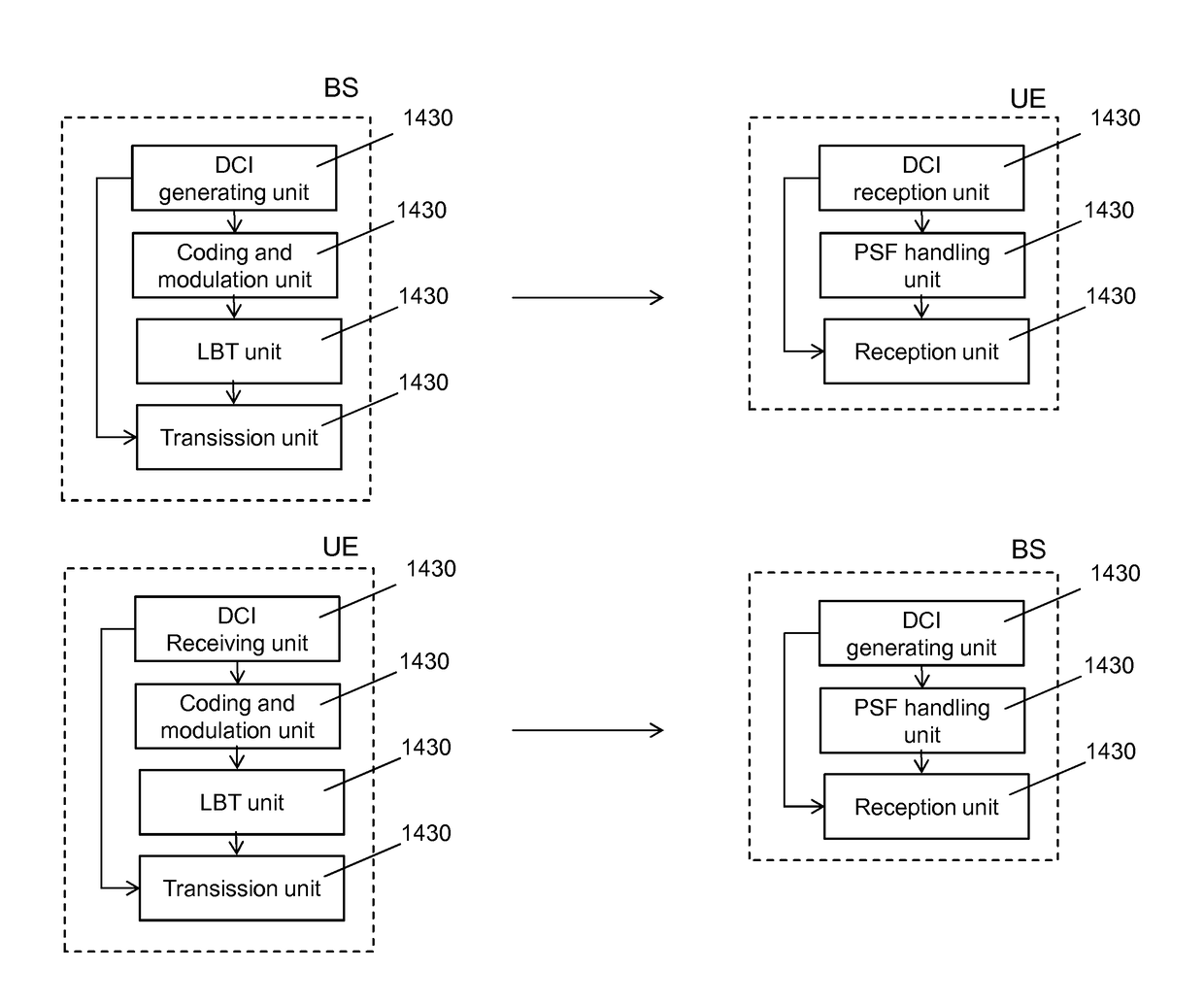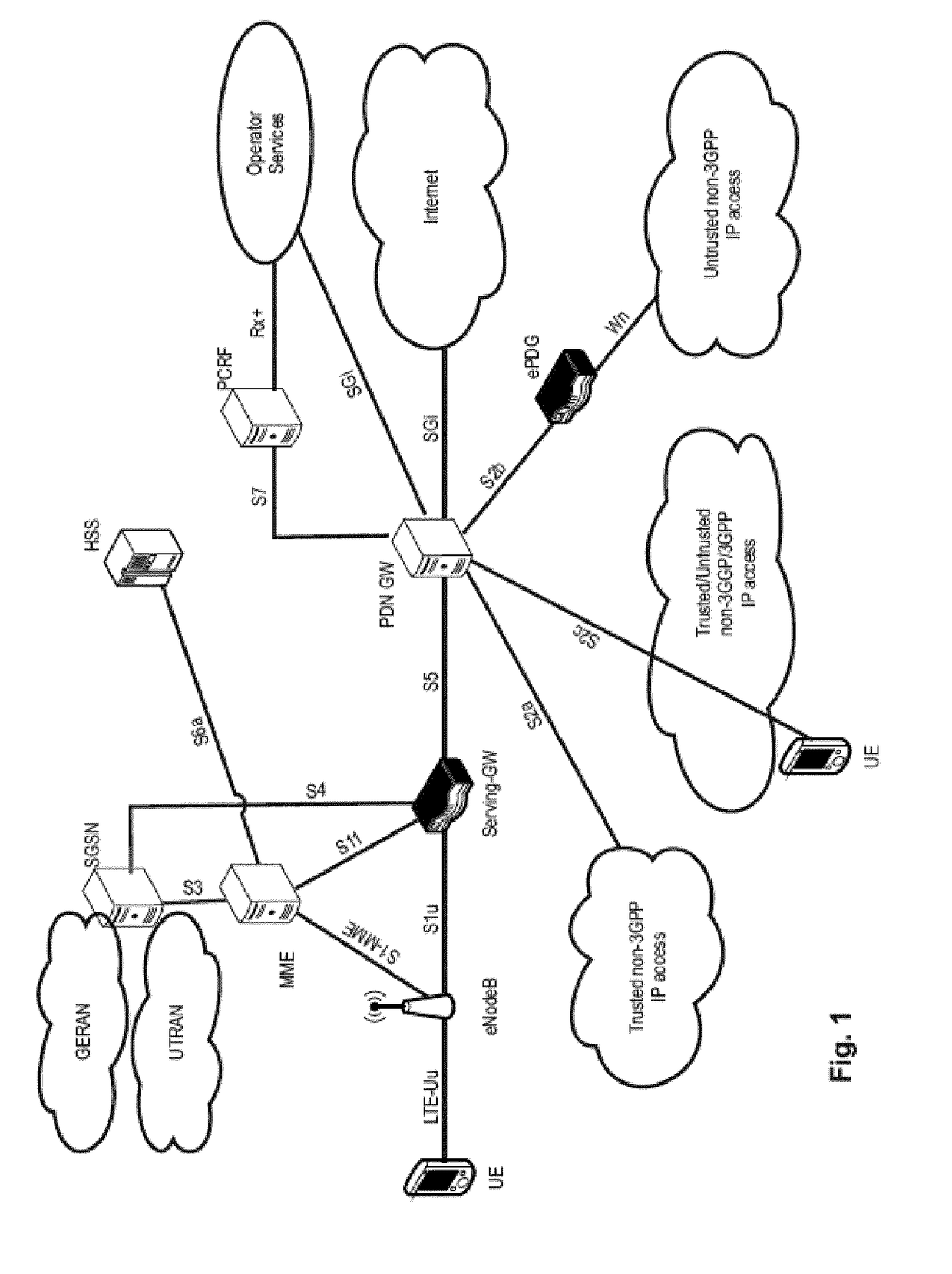Modulation order adaptation for partial subframes
a subframe and module technology, applied in the field of data transmission and reception, can solve the problems of not being able to configure a mobile terminal, not being able to match the quality of licensed spectrum, and not being able to find a spectrum band wide enough for the lte-advanced system, so as to reduce the number of possible starting points and efficient utilization
- Summary
- Abstract
- Description
- Claims
- Application Information
AI Technical Summary
Benefits of technology
Problems solved by technology
Method used
Image
Examples
embodiment a
[0162]According to this embodiment, the modulation order adaptation is indicated within the downlink control information (DCI) that is used for indicating a PDSCH allocation within a shortened PDSCH to the UE.
[0163]One approach for indicating the modulation order adaptation within the DCI can be achieved by extending the DCI format length by one bit per allocated transport block which indicates whether the modulation order for the transport block has been increased compared to the initial modulation order given by the MCS index signaled for that transport block. An exemplary implementation is shown in Table 3.
TABLE 3Bit value interpretation for modulation order adaptationBit valueNew modulation order0Keep initial modulation order1Increase modulation order by one stepcompared to initial modulation order
[0164]If the modulation order encompasses only switching to the next higher modulation order, one bit for indication is sufficient.
[0165]If more than one step of adaptation is to be su...
embodiment b
[0182]According to this embodiment, the modulation adaption indication is semi-statically configured. In particular, it is signaled for which combinations of transport block sizes (or transport block size indices) and partial subframe length the modulation order adaptation will be applied.
[0183]In contrast to Embodiment A, the DCI format changes or the reinterpretation of certain bits within DCIs, are not required. According to embodiment B, the LTE / LTE-Advanced specification may be extended by one or multiple tables that define for which TBS indices and PDSCH length (or partial subframe length), an adaptation of the modulation order is applied with respect to the initial modulation order indicated by the MCS field in the DCI.
[0184]An exemplary table for that purpose is shown in FIG. 13. It contains for each TBS index the PDSCH length margin (in number of OFDM symbols) for modulation order adaptation for the MSC configuration without 256QAM according to the supported TBS indices in ...
embodiment c
[0190]In accordance with Embodiment C, the modulation order adaptation is applied when the code rate with the initial modulation order that is indicated by the MCS field within the DCI exceeds a certain defined code rate threshold. A reasonable value for the code rate threshold could for example be 0.931 following the current specification in terms of supported code rates as given in Section 7.1.7 of TS 36.213 cited above. However, it is noted that this threshold value is only exemplary and a different value can be predefined. Alternatively, this threshold may be configurable for instance by semi-static signaling or the like.
[0191]Adaptations or enhancements of DCI formats are not required in case of Embodiment C.
[0192]The receiver knows the length of the partial subframe as well as the MCS including TBS scheduled. The determination of the partial subframe length can be achieved either by explicit signaling of the length from transmitter side or by detection of the partial subframe ...
PUM
 Login to View More
Login to View More Abstract
Description
Claims
Application Information
 Login to View More
Login to View More - R&D
- Intellectual Property
- Life Sciences
- Materials
- Tech Scout
- Unparalleled Data Quality
- Higher Quality Content
- 60% Fewer Hallucinations
Browse by: Latest US Patents, China's latest patents, Technical Efficacy Thesaurus, Application Domain, Technology Topic, Popular Technical Reports.
© 2025 PatSnap. All rights reserved.Legal|Privacy policy|Modern Slavery Act Transparency Statement|Sitemap|About US| Contact US: help@patsnap.com



